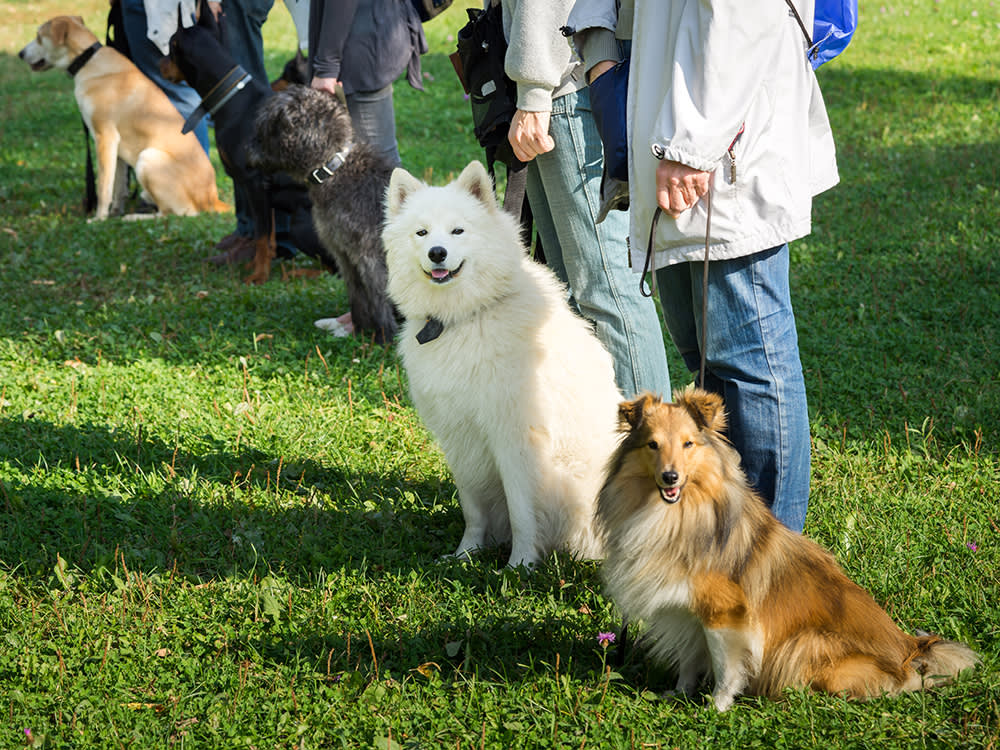Sit: Adding Distractions
PREREQUISITE: You should be able to turn your back on your dog, walk away from him, and step out of sight.
If your dog is not doing this, please do not proceed to the next step. Go back to the previous lesson on sit and practice some more.
TOOLS:
- Treats
- Treat pouch or pocket
- Clicker
- Toys and other rewards
- Distractions such as:
- Walmart bags
- Toys
- Other people
- Food bowls
- Try to find things that haven’t been in the environment before that your dog might find interesting.

TRAINING ENVIRONMENT: Start in an environment with very few distractions and as much space as possible, such as your fenced back yard. You may find this counterintuitive since we are trying to increase distractions, but we need to control the level of distraction so we can work up gradually. Going from your house to the dog park is way too much!
STEPS:
- Leave your dog out of sight and set up your environment with distractions.
- The distractions should be as far away from the door he will come through as possible.
- Bring your dog into the environment on his leash.
- Don’t let him go near the distractions.
- Give your dog a minute to notice the distractions.
- If he gets excited, wait for him to calm down.
- Let him sit on his own, then click and treat.
- Repeat a few times.
- Ask him to sit.
- Click and treat and go onto the next step if he’s successful. Go back to clicking and treating without the cue if he is not.
- Repeat three times.
Begin treating in position and adding the release word instead of clicking and treating. - After three consecutive successes without the click and treat, walk a little closer to one distraction and try again.
- Repeat this until you are right next to the distraction and your dog will respond to the cue.
- When you’ve mastered getting close to one distraction move towards the next until you have mastered them all.
- Switch the distractions around and start again.
- Move to a more distracting environment (example: from your yard to a quiet park where there are a few people).
- Always start from the beginning when you change venues.
- Repeat this choosing more difficult locations. For example: Yard to quiet park to park 200 yards from playground, to 100 yards from playground to next to playground to crowded park.
HOMEWORK:
Practice ten repetitions, three times each day. Your goal is to get to the quiet park, but feel free to keep going if he’s doing well.
AT THE END OF THIS STEP:
You should be able to ask your dog to sit in a variety of locations with several distractions present.
TROUBLESHOOTING:
My dog won’t sit.
- The environment is too distracting or you started with too many distractions all at once.
- Try removing some of the distractions or placing them farther away, or moving to an environment that isn’t so distracting.
- Try improving the rewards. Try some boiled chicken or freeze-dried fish. The stinkier the better when working with distractions!
- Go back to the point where he was last successful and practice. After a few successes, try increasing the difficulty again.
- Move farther away from the distractions and practice again.
My got up before I expected.
- Shorten the time you ask your dog to sit and work up. Go back to short sits and work back up as if he’s new to this.
- Go back to your last location where you had success, and move more slowly towards the distractions.
